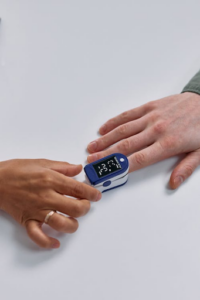 Ehlers-Danlos Syndrome is a genetic disorder that affects the connective tissues in the body. It is caused by mutations in the genes responsible for producing collagen, a protein that provides strength and elasticity to the skin, joints, blood vessels, and other tissues. There are several types of Ehlers-Danlos Syndrome (EDS), each with its own symptoms and complications.
Ehlers-Danlos Syndrome is a genetic disorder that affects the connective tissues in the body. It is caused by mutations in the genes responsible for producing collagen, a protein that provides strength and elasticity to the skin, joints, blood vessels, and other tissues. There are several types of Ehlers-Danlos Syndrome (EDS), each with its own symptoms and complications.
One of the main characteristics of EDS is hypermobility or excessive joint flexibility. This can result in frequent joint dislocations, subluxations, and chronic pain. People with this condition may also have fragile, stretchy skin prone to bruising and scarring. Additionally, they may experience problems with their blood vessels, such as easy bruising, aneurysms, and organ rupture.
While EDS has no cure, treatment focuses on managing symptoms and preventing complications. This may include physical therapy to strengthen muscles and stabilize joints, medications, and natural compounds to manage pain and inflammation, and lifestyle modifications to avoid activities that can cause injury. Individuals with EDS must work closely with a healthcare team specializing in this condition to develop a personalized treatment plan.
Postural Orthostatic Tachycardia Syndrome and Ehlers-Danlos Syndrome
 Postural Orthostatic Tachycardia Syndrome (POTS) is a condition that affects the autonomic nervous system. It is characterized by an abnormal increase in heart rate upon standing up. Ehlers-Danlos Syndrome (EDS), on the other hand, is a group of genetic disorders that affect the connective tissues in the body. While POTS and EDS are different conditions, they are often seen together in patients. Studies have shown that up to 90% of individuals with EDS also have POTS.
Postural Orthostatic Tachycardia Syndrome (POTS) is a condition that affects the autonomic nervous system. It is characterized by an abnormal increase in heart rate upon standing up. Ehlers-Danlos Syndrome (EDS), on the other hand, is a group of genetic disorders that affect the connective tissues in the body. While POTS and EDS are different conditions, they are often seen together in patients. Studies have shown that up to 90% of individuals with EDS also have POTS.
The exact relationship between the two conditions is not fully understood, but it is believed that the underlying connective tissue abnormalities in EDS may contribute to the development of POTS. Additionally, the symptoms of POTS, such as dizziness, fatigue, and lightheadedness, can be exacerbated in individuals with EDS due to the already compromised connective tissues. Overall, the coexistence of POTS and EDS highlights the complex nature of these conditions and the need for a multidisciplinary approach to their management.
Functional and Integrative Treatments for EDS and POTS
Integrative and Functional Medicine treatments for EDS and POTS offer a comprehensive approach to managing this complex condition. One key aspect of Integrative and Functional Medicine for EDS is the emphasis on personalized care. Each patient’s treatment plan is tailored to their specific needs and symptoms. This may involve a combination of conventional medical therapies, such as physical therapy and pain management, as well as complementary and alternative therapies, such as acupuncture, functional neurology, chiropractic care, nutrition, dietary supplements, and herbal medicine.
Another vital component of Integrative and Functional Medicine involves identifying and treating underlying genetic factors and addressing any nutritional deficiencies or imbalances contributing to symptoms. Lifestyle modifications, including stress reduction techniques and appropriate exercise, are also commonly recommended.
One common approach for POTS is exercise therapy, which includes a combination of aerobic and resistance training. This helps improve cardiovascular fitness and increases blood volume, reducing symptoms such as dizziness and fatigue. Additionally, dietary changes, such as increasing salt and fluid intake, can help maintain blood volume and regulate blood pressure.
Another essential aspect of functional and integrative treatments for POTS is managing stress and mental health. Techniques such as mindfulness meditation and cognitive behavioral therapy can help individuals cope with the emotional and psychological impact of living with POTS. These approaches can also help reduce anxiety and improve overall well-being.
In conclusion, functional and integrative treatments for EDS and POTS encompass a holistic approach that addresses both physical and mental health, promotes overall health and well-being, and offers a comprehensive and personalized approach to care.







